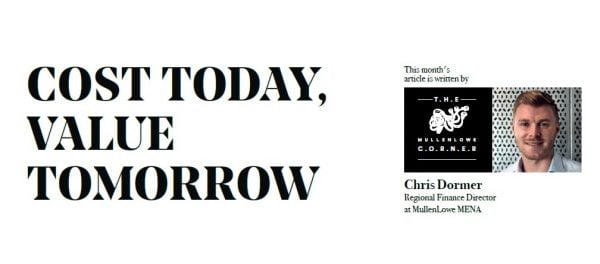
“ The approach to determining ‘value’ has been to dismantle the fee proposal.”
Value is defined as “the regard that something is held to deserve”. This is the exact challenge agencies face today, justifying their merited fees. Blanket fees for strategy and creative are a thing of the past. The reason why is simple: what we’re great at for our clients we’re awful at when it comes to ourselves… communicating the “why”. Talking money is an uncomfortable subject for most. This, combined with marketers’ difficulty in articulating and quantifying their contribution to value creation, has led to the reduction of agency fees. To those outside of marketing, our services are mistakenly viewed as a cost line item, as opposed to a value-generating activity. Our contribution to top-line and bottom-line performance is difficult to directly assess (even in a vastly expansive digital world) and, as such, marketing expenditure is viewed as discretionary. The result of our inability to communicate our worth has resulted in the strengthened position of finance and procurement teams, armed with working knowledge of the agency business model, to commoditise our services.
The commoditisation of marketing services has been amplified by consultancy firms’ penetrating the market of what was a well established sphere of influential players, promoting a rate card remuneration model in the same manner as if we are selling legal or accounting services. This, I believe, has stemmed from the finance industry, which in my opinion is culpable for devaluing the marketing industry’s worth. I support this argument as financial regulation fails to assess the long-term intangible value of marketing activity. Expenditure on brand development, advertising and marketing-related R&D is expensed rather than capitalised. The result: reduced net profits, assets (cash) and equity value, all of which is a red flag for management and external investors. All marketing expenditure therefore requires a business case, as expected, however is now supported by procurement artillery to drive the price down. The approach to determining ‘value’ has been to dismantle the fee proposal in the same way a mechanic would charge for labour when fixing a car, and to its own demise the marketing industry has accepted this by employing a rate card model.
A rate card model encourages a barter economy that undermines the value of the blood, sweat and tears of the creative genius. Furthermore it encourages a transient attitude between client and agency due to focusing on cost today, not value tomorrow and the days after. The value of solving the client’s brief is lost to day rates and salary multipliers, curtailed to a myopic P&L. As a result, our services are tuned up and down and fees go through cyclical renegotiations, all motivated in the direction of managing short-term financial performance.
In the absence of a meteoric shift in financial regulation to drive a directional change in the perception of marketing value, it’s up to marketers to re-establish their true value and the industry to command the fees warranted by the services provided. How? It’s my strong belief that what I refer to as the Golden Triangle (that being the CEO, CFO and CMO) must crosspollenate their skillsets. The time to do that is now. Ironically, this is echoed by the research of consultancy firms such as Ernst & Young who have promoted the evolution of collaboration of the C-Suite over the last decade, predominately between CFO and CMO. Their alignment will result in repositioning the rhetoric of marketing expenditure and increase budget availability. It may appear as an oxymoron for an FD to want to increase expenditure rather than to cut cost; you could even argue my sentiment is motivated by my agency-side position to increase fee income. However I’d firmly disagree.
Looking at the big picture, with conviction I say marketing is the catalyst for maintenance and growth of stock value. Value the agency for what they bring to the table and encourage colouring outside of the lines. A fee proposal cannot be dissected to time. Creativity is infinite and should not be hindered by looking at the clock. If you believe in the agency and the agency believes in its service, the remuneration model must be constructed as a transparent partnership whereby initial costs are covered and long-term value generation is shared. This is a nigh on impossible sell! The industry remuneration model may change in the future, however the passion and value from MullenLowe will always remain.









